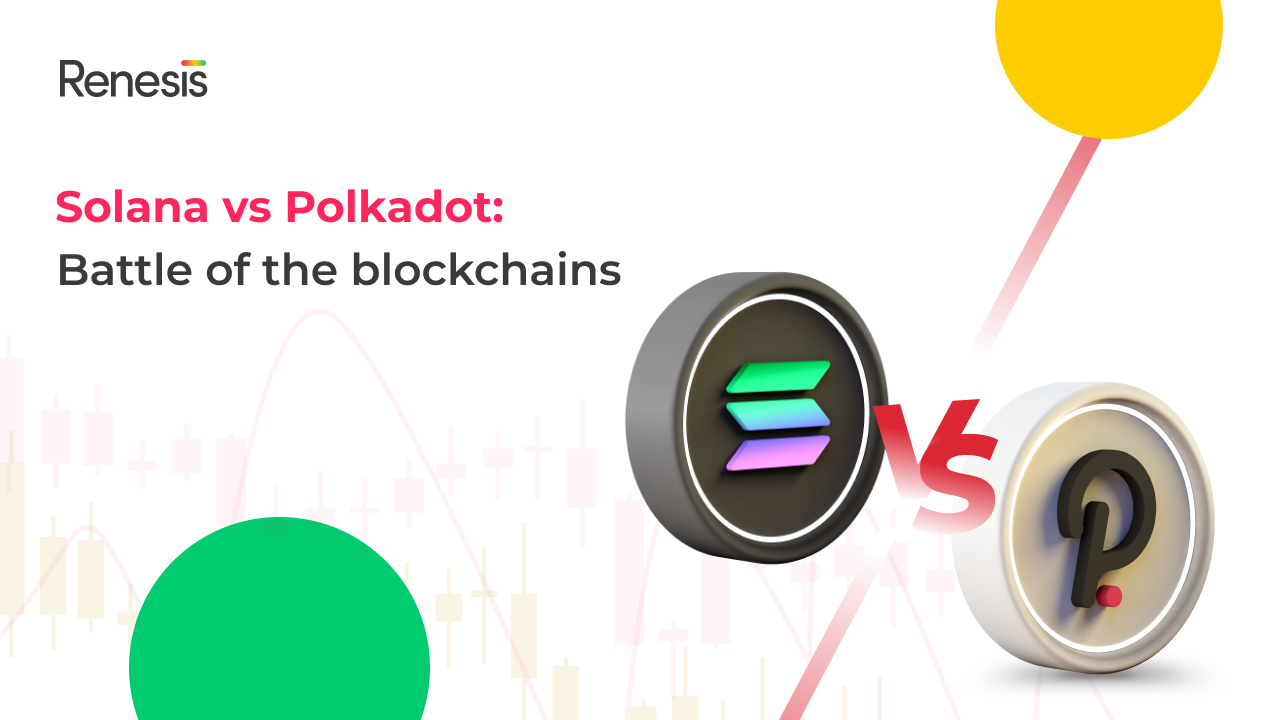Solana vs Polkadot: Battle of the blockchains
In the ever-growing blockchain industry, there are over 12,000 cryptocurrencies built on almost 1,000 different blockchain platforms. Investing in such an array of projects can be confusing, especially when it appears that two or more projects are attempting to solve the same problems.
In this post, we’ll compare the two blockchains and their key features. Which one is better? Stay tuned to find out!
What is Solana?
Designed to scale to thousands of transactions per second, Solana is a high-performance blockchain. Solana provides top-notch scalability and developer flexibility. Using the protocol, developers can build richer and more immersive Dapps with low gas fees and open infrastructure. In comparison to Ethereum, the network is much faster and cheaper, averaging around $0.00025 per transaction.
What is Polkadot?
With Polkadot, blockchains are scalable, interoperable, and governed.
Polkadot is another programmable blockchain ecosystem for smart contracts. Unlike Solana, the protocol integrates a multi-chain application environment. In order to make the blockchain network interoperable with others. A key goal of Polkadot is to enable developers to send data fluently between networks in a secure manner to drive blockchain adoption and interoperability.
Polkadot (DOT) was first introduced in 2016. In that year, Ethereum co-developer Gavin Wood released the network’s whitepaper. Solidity, the language used by Ethereum to write smart contracts, was developed by Wood, one of the most influential people in the crypto sector.
Polkadot and Solana: How are they similar?
As a result, things are a lot easier for them since they have basically the same speed. When you send something to both of them, you pay nothing and you get it in mere seconds.
Smart contracts are also similar to them. They both allow you to build your own projects, which opens up a whole new world for them. We all know that ETH did not grow on its own. In the ETH blockchain, we had dozens of amazing and huge projects, which allowed ETH to be used to pay gas fees.
How are they different?
The Solana blockchain is designed to scale to thousands of transactions per second, while Polkadot provides scalability, interoperability, and governance for blockchains. In contrast to Polkadot, Solana uses a Proof of History consensus algorithm, whereas Polkadot uses a Proof of Stake consensus algorithm. Furthermore, Polkadot offers multi-chain scaling while Solana offers single-chain scaling.
How Does Solana Work?
Using a variety of protocols, Solana aims to be the fastest blockchain on the market. Data is separated and transmitted between the network’s nodes using a protocol called the turbine. Gulf Stream is then used to process this data.
As opposed to Bitcoin, Golf Stream does not require a mempool, which speeds up the transaction process. The Gulf Stream protocol can handle 50,000 TPs. A unique aspect of this approach is that packets are forwarded to nodes before the last batch is confirmed.
Cloudbreak
Network accounts are stored in the Cloudbreak protocol. There are many ways in which the system improves on earlier blockchains. Cloudbreak, for instance, enables Dapps to operate faster by reading and writing data simultaneously.
Solana Coin
The native utility token of the Solana network is SOL. The token can be used as a cryptocurrency to make payments without requiring permission. The platform is also used by developers and users to pay network fees and execute smart contracts. The project will issue 510 million SOLs over its lifespan.
How does Polkadot work?
Polkadot is a multi-chain ecosystem. There are several layers in the Polkadot network, with the relay chain acting as the core communication layer. The consensus layer is responsible for the network’s stability.
Parachains are sovereign blockchains that developers can create on the network. It is possible for these subnetworks to utilize Polkadot for security or to integrate unique technical structures. Polkadot parachains can be governed and tokenized.
DOT Token
DOT is the native utility token for Polkadot. With this token, users can participate in the protocol’s community governance system. DOT can also be staked to earn rewards.
So, What’s Better: Solana or Polkadot?
It is impossible to say which project is better since they are so different. Polkadot aims to solve problems of scalability and interoperability in blockchain technology, while Solana is a low-fee and speedy blockchain. Despite the differences between the two projects, both strive to improve crypto usage. These projects may become the backbones of the blockchain ecosystem if they achieve these goals and provide unique usability.










